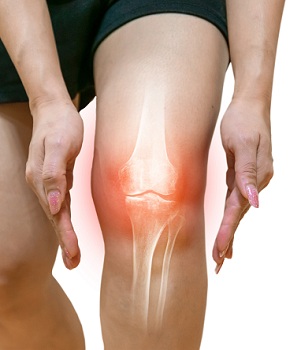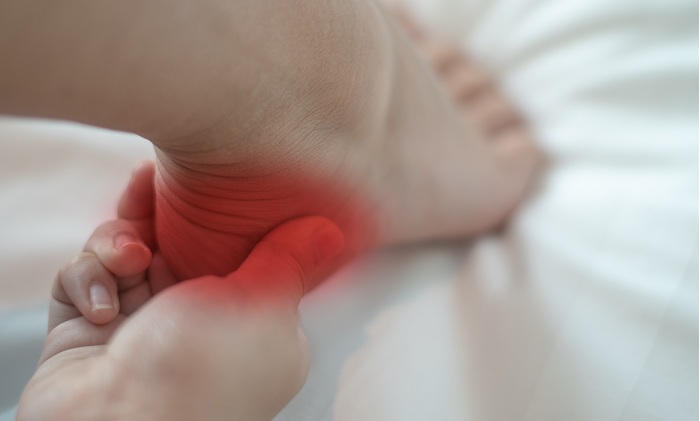Bone spurs are usually formed where bones join one another, but can also occur on your hips or spine. This can be a particularly embarrassing condition, so the first thing that you should be doing is researching on how to get rid of bone spurs in your knees so that you can return to your normal activities.
Bone spurs—the symptoms, causes, and treatments—can be new to you, so this article provides relevant information about this topic.
What Are Bone Spurs?
If you notice small, bumpy, extra bony growths or protrusions that develop along the edges of a bone, and which cause pain, swelling, and, sometimes, inflammation of joints, it’s likely bone spurs. Even a single bump that occurs anywhere in the body, like toe or finger, can interfere with normal movement.
Here are the common symptoms of bone spurs:
- Pain in the affected area
- Swelling
- Inflammation
- Deformity
- Difficulty in motion, such as walking, playing sports, or doing other activities
What Are The Causes Of Bone Spurs?
The most common causes of bone spurs are injuries, such as accidents, repetitive motions, such as picking or pressing, or even standing up straight
Here are the other possible causes of bone spurs:
- Bone spurs may result from a genetic predisposition.
- Other people get them from being overweight.
- Some of the more common causes of bone spurs include arthritis, trauma, and bone tumors. However, bone spurs can’t be diagnosed based solely on the symptoms of osteoarthritis, and can often present with other conditions, including psoriatic arthritis, herniated discs, and some forms of bone cancer.
- Other causes of bone spurs include injury, which may result from a direct trauma to the bone or soft tissue around it. This may result in a fracture, either of soft tissue ligament or bone.
- Degenerative diseases, such as kidney disease or spinal cord injury, may also lead to the growth of bone spurs.
Diagnosis
The diagnostic procedure usually done to rule out bone spurs is bone x-ray. Your x-ray will also help the doctor make the determination about how long and what area of the heel bone to treat or remove, where and how deep they should be cut to reduce the size of the heel spurs, or even how deep they should be sunken so that the bone heals completely.
How To Treat Bone Spurs
The treatment of bone spurs is often dependent upon the specific condition that they’re causing and on which area they are located. Take a look at the following treatment options available for bone spurs:
1. Medications
Bone spurs are not dangerous and will eventually heal on their own. However, they may cause pain and discomfort when they start to appear. They are often caused by osteoarthritis, and as the disease progresses, more bones will be broken down. The pain from arthritis and the deterioration of bone due to age can make it very difficult to get any relief.
Take a look at the following medications that the doctor may prescribe to patients with bone spurs:
- Methotrexate: One form of medication for bone spurs that doctors use is called methotrexate. This medication works by killing off the osteoblasts. The treatment is used to treat individuals who have advanced forms of osteoarthritis.
- Glucocorticosteriods: If you suffer from osteoarthritis or other degenerative diseases, and have bone spurring, the treatments available include medications to ease inflammation, such as prednisone, glucocorticosteroids, and other nonsteroidal anti-inflammatory drugs.
- Calcium Carbonate: This supplement can also be used as a medication for bone spurs. This medicine will work by keeping bone from breaking down and making it less likely to break. It is often used for people who need medications for bone spurs because calcium can help in the healing process.
Now that you already know about the different types of medications for bone spurs, how do you know which one is right for your condition? First of all, talk to your doctor about your particular case. Make sure that the medication you choose is safe and will work.
 You also want to make sure that you follow the directions on the label. You don’t want to experience side effects or develop allergic reactions from the drug that you are using. Thus, it should be in your best interest to make sure that you do your research ahead of time before you decide to use any type of medication.
You also want to make sure that you follow the directions on the label. You don’t want to experience side effects or develop allergic reactions from the drug that you are using. Thus, it should be in your best interest to make sure that you do your research ahead of time before you decide to use any type of medication.
Knowing about the different types of medications for bone spurs and the type of medication that will work best for you will allow you to experience pain relief, as well as increased mobility.
Splint Or Cast
Treatment options for bone spurs tend to be limited to wearing either a cast or brace, but even these can cause pain and limit your daily activities. One thing that you can do is to wear a splint as this helps to alleviate some of the pain, and gives you more opportunity to use your joints without having to use these restrictions.
Bone Spur Surgery
It is not unusual for bone spurs to be left behind in the bone and create friction when you walk or run. This friction leads to irritation of the surrounding tissues, resulting in redness and swelling. Pain and inflammation are also common side effects of treatment for osteoarthritis bone spurs. For this reason, surgery is often used for treating bone spurs since surgery reduces further damage to the bone.
Check the following surgical treatments for bone spurs:
- Bone spur removal can involve surgery, osteotomy, or fusion. Osteotomy involves the removal of the bone spurring along the edge of a bone.
- Other doctors use a fusion technique to put the bone back into place, but, in some cases, a procedure called osteoplastiation may be recommended, wherein the bone is fused into one piece using screws and metal plates to create a new bone joint.
- Some doctors may recommend removal of the bone spur using an arthroscope to break it down and, then, a laser to kill it off. This method can result in the complete removal of the bone spur and may even improve the condition of the area where it grows, leaving no scarring.
Other Treatment Options
Other options to relieve pain and inflammation are radiation and spinal decompression. Spinal decompression is basically a procedure that helps you to have the back that you want. This involves getting rid of the spurs and taking away the pressure that they are causing on the surrounding bone.
When your back has bone spurs, it can be very painful and can cause problems, such as not being able to move properly or the way you want to. Because of this, many people are looking into how spinal decompression can help treat bone spurs.
Radiation therapy, on the other hand, can help reduce the pain associated with bone spurs. Patients who are suffering from plantar fasciitis or painful bone heel spur tend to experience less pain with radiation therapy. Also, it helps significantly improve their quality of life. The external beam radiation therapy is a common cancer treatment that is similar to when a patient undergoes an x-ray.
Good Nutrition
Bone spurs tend to form when collagen is broken down and becomes tiny, needle-like structures known as osteocytes. Eating foods high in protein and calcium helps to repair this damage and makes your bones stronger and healthier.
In general, the best foods for proper bone healing after surgery are those that contain high levels of protein, calcium, and vitamin D. These foods will help speed up the healing process and increase the body’s ability to create new cells. If the person does not receive the right amounts of these nutrients, it can be extremely difficult to speed up the recovery process after bone spur removal surgery
Importance Of Prompt Treatment
Bone spurs are rarely painful, and they are rarely permanent as well. They tend to heal in a few years and are rarely dangerous or life-threatening. If the problem occurs in the later stages of the disease, you should consult your doctor about surgery to remove bone spurs to prevent further damage. However, if there is pain in the joints, you may want to visit your doctor for an MRI or bone scan to rule out bone cancer.
Your doctor will be able to tell you whether you need surgery for treating bone spurs and the complications associated with them, and whether it will be possible to treat your bone spurs with medications. Depending on the types and severity of your symptoms, your doctor will be able to prescribe a medication that will target the root cause and reduce or eliminate the symptoms.
Conclusion
The treatment of bone spurring is largely dependent on the underlying cause of the disease. The common pain medications include steroids and non-steroidal anti-inflammatory drugs (NSAIDS). Also, splints and casts help reduce pain.
Patients with bone spurs may also benefit from radiation therapy and spinal cord decompression. Sometimes, the bone spurs can be removed by surgery. You will need to discuss all of your options with your doctor before making a decision about treatment to ensure successful outcomes.


















